Related Research Articles
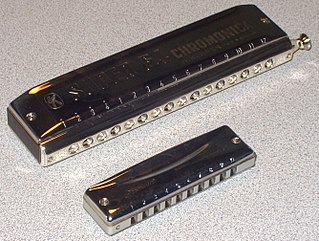
The harmonica, also known as a French harp, mouth harp or mouth organ, is a free reed wind instrument used worldwide in many musical genres, notably in blues, American folk music, classical music, jazz, country, and rock. The many types of harmonica include diatonic, chromatic, tremolo, octave, orchestral, and bass versions. A harmonica is played by using the mouth to direct air into or out of one holes along a mouthpiece. Behind each hole is a chamber containing at least one reed. The most common is the diatonic Richter-tuned with ten air passages and twenty reeds, often called the blues harp. A harmonica reed is a flat, elongated spring typically made of brass, stainless steel, or bronze, which is secured at one end over a slot that serves as an airway. When the free end is made to vibrate by the player's air, it alternately blocks and unblocks the airway to produce sound.

Canned Heat is an American blues and rock band that was formed in Los Angeles in 1965. The group has been noted for its efforts to promote interest in blues music and its original artists. It was launched by two blues enthusiasts Alan Wilson and Bob Hite, who took the name from Tommy Johnson's 1928 "Canned Heat Blues", a song about an alcoholic who had desperately turned to drinking Sterno, generically called "canned heat". After appearances at the Monterey and Woodstock festivals at the end of the 1960s, the band acquired worldwide fame with a lineup of Hite (vocals), Wilson, Henry Vestine and later Harvey Mandel, Larry Taylor (bass), and Adolfo de la Parra (drums).

The sheng is a Chinese mouth-blown polyphonic free reed instrument consisting of vertical pipes.

George Lawrence Thorogood is an American musician, singer and songwriter from Wilmington, Delaware. His "high-energy boogie-blues" sound became a staple of 1980s USA rock radio, with hits like his original songs "Bad to the Bone" and "I Drink Alone". He has also helped to popularize older songs by American icons, such as "Move It on Over", "Who Do You Love?", and "House Rent Blues/One Bourbon, One Scotch, One Beer".

The Boston Garden was an arena in Boston, Massachusetts. Designed by boxing promoter Tex Rickard, who also built the third iteration of New York's Madison Square Garden, it opened on November 17, 1928, as "Boston Madison Square Garden" and outlived its original namesake by 30 years. It was above North Station, a train station which was originally a hub for the Boston and Maine Railroad and is now a hub for MBTA Commuter Rail and Amtrak trains.

George Allen Russell was an American jazz pianist, composer, arranger and theorist. He is considered one of the first jazz musicians to contribute to general music theory with a theory of harmony based on jazz rather than European music, in his book Lydian Chromatic Concept of Tonal Organization (1953).
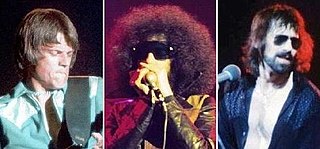
The J. Geils Band was an American rock band formed in 1967, in Worcester, Massachusetts, under the leadership of guitarist John "J." Geils. The original band members included vocalist Peter Wolf, harmonica and saxophone player Richard "Magic Dick" Salwitz, drummer Stephen Bladd, vocalist/keyboardist Seth Justman, and bassist Danny Klein. Wolf and Justman served as principal songwriters. The band played R&B-influenced blues rock during the 1970s and soon achieved commercial success before moving toward a more mainstream radio-friendly sound in the early 1980s, which brought the band to its commercial peak. They performed a mix of cover songs of classic blues and R&B songs, along with original compositions written primarily by Wolf and Justman, as well as some group compositions written under the pseudonymous name Juke Joint Jimmy, representing compositions credited to the entire band as a whole. After Wolf left the band in 1983 to pursue a solo career, the band released one more album in 1984 with Justman on lead vocals, before breaking up in 1985. Beginning in 1999, the band had several reunions prior to the death of its namesake, J. Geils, on April 11, 2017.
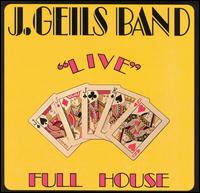
"Live" Full House is the first live album by American rock band The J. Geils Band, released in 1972.
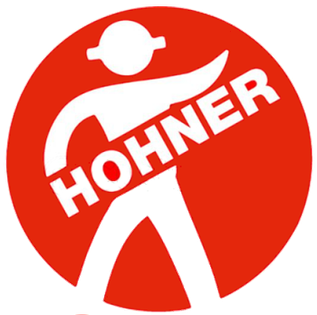
Hohner Musikinstrumente GmbH & Co. KG is a German manufacturer of musical instruments, founded in 1857 by Matthias Hohner (1833–1902). The roots of the Hohner firm are in Trossingen, Baden-Württemberg. Since its foundation, and though known for its harmonicas, Hohner has manufactured a wide range of instruments, such as kazoos, accordions, recorder flutes, melodicas, banjos, electric, acoustic, resonator and classical guitars, basses, mandolins and ukuleles.

John Warren Geils Jr., known professionally as J. Geils or Jay Geils, was an American guitarist. He was known as the leader of The J. Geils Band.
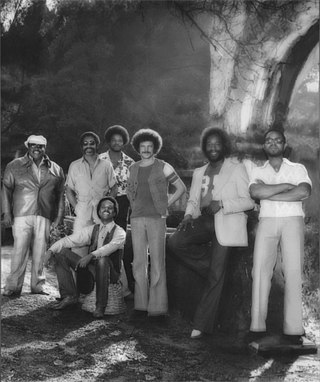
Lee Oskar is a Danish harmonica player, notable for his contributions to the sound of the rock-funk fusion group War, which was formed by Howard E. Scott and Harold Brown, his solo work, and as a harmonica manufacturer. He continues to play with 3 other original War band members, Harold Brown, Howard Scott and B.B. Dickerson, under the name LowRider Band.
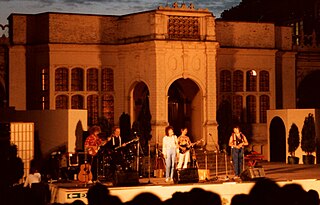
The Albion Band, also known as The Albion Country Band, The Albion Dance Band, and The Albion Christmas Band, is a British folk rock band, originally brought together and led by musician Ashley Hutchings. An important grouping in the genre, it has contained or been associated with a large proportion of major English folk performers in its long and fluid history.

George "Harmonica" Smith was an American electric blues harmonica player. Apart from his solo recordings, Smith is best known for his work backing both Muddy Waters and Big Mama Thornton.
Henry Franklin "Buster" Smith, also known as Professor Smith, was an American jazz alto saxophonist and mentor to Charlie Parker. Smith was instrumental in instituting the Texas Sax Sound with Count Basie and Lester Young in the 1930s.
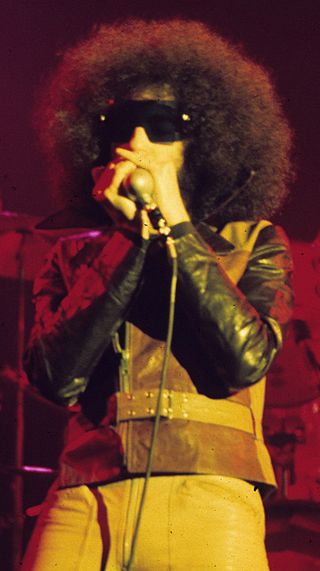
Richard Salwitz, known as Magic Dick, is an American musician, noted for playing the harmonica for the J. Geils Band. In addition to the harmonica, Salwitz plays the trumpet and saxophone.

Luther Tucker was an American blues guitarist.

Christian Dozzler is an Austrian blues, boogie woogie and zydeco multi-instrumentalist and singer, now based in the Dallas/Fort Worth area. He plays piano, harmonica, accordion and organ, and writes most of his recorded material. He has been nicknamed "Vienna Slim".

Frédéric Yonnet is a French musician, producer and recording artist who is best known for his use of the harmonica as a lead in jazz, R&B, funk, gospel and hip-hop influenced music. His ability to play chromatic scales on a diatonic harmonica gives him access to twice as many notes as the instrument is designed to deliver.
Stanley Harper(néStanley Theodore Wisser; 2 September 1921 – 29 June 2016) was an American virtuoso classical harmonica artist, arranger, and composer. He died June 29, 2016, in a home for the elderly in New Jersey. He raised the popularity of classical harmonica by influencing composers to write for the instrument and by transcribing serious classical works, himself. Through his virtuosity, he widened the recognition of classical harmonica in solo, chamber, and major orchestral settings.
A harmonica, or mouth organ, is a free-reed wind instrument.